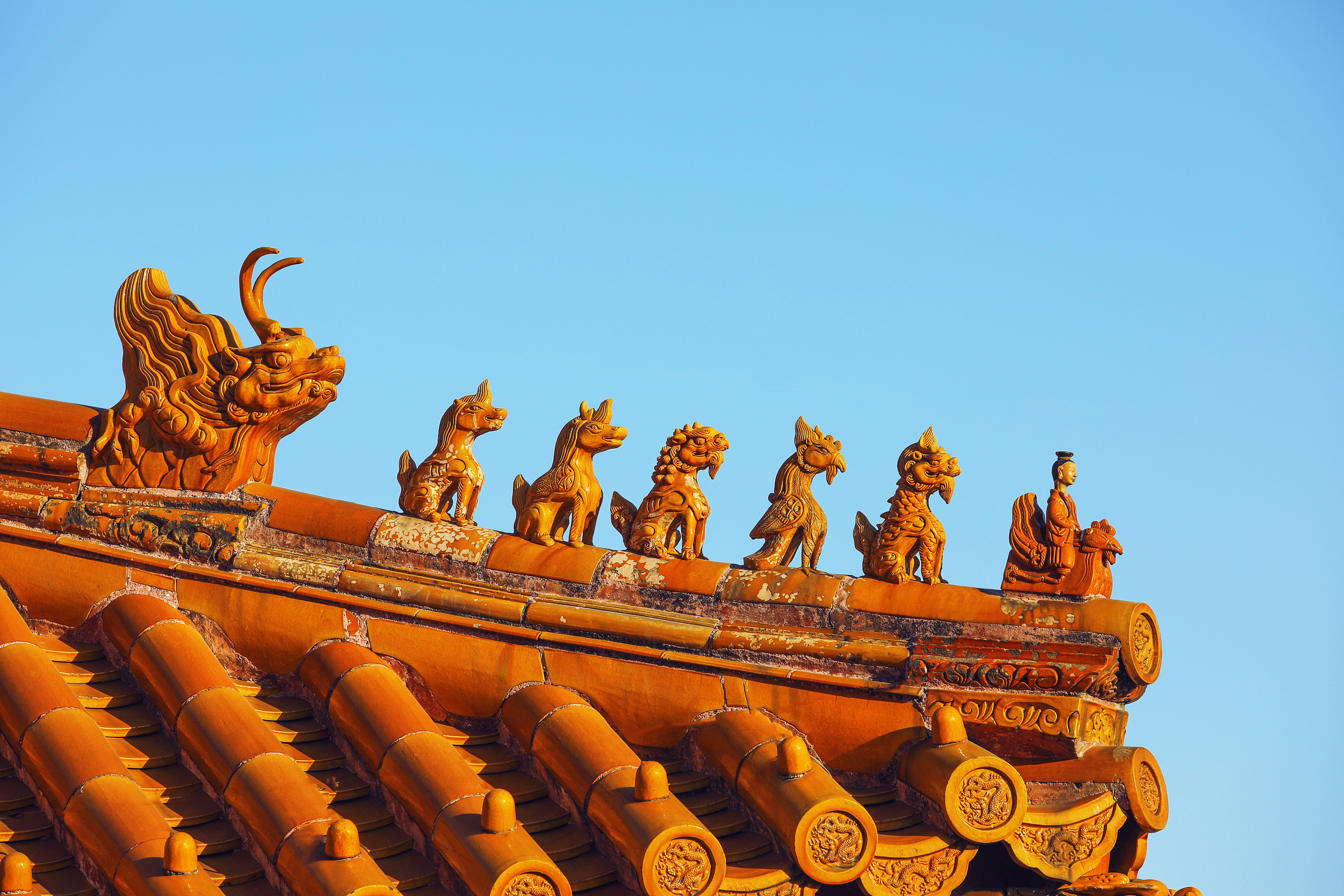Brilliant Glazed Roof of Forbidden City

A picture of glazed roofs of the Forbidden City, Beijing. (PHOTO: VCG)
By?BI?Weizi
The Forbidden City, the political and ritual center of China for over 500 years and one of the world's most important cultural heritage sites, is a precious testimony to Chinese civilization during the Ming and Qing dynasties. The glazed roofs of the imperial palaces continue to shine, showcasing the advanced architecture of ancient China.
A glaze is an impermeable layer or glass-like coating applied to the ceramic body which is then melted by firing. The main component of the glaze is silica, while the type varies depending on the addition of other materials such as copper, aluminium and other components that affect the viscosity, colour and texture of the glaze.
Glazed tiles on the roof of the Forbidden City serve an aesthetic and functional purpose by adding to the beauty of the building's facade, highlighting the function of the building, and protecting the roof from damage while also insulating the building. The tiles are mostly yellow, as in ancient times yellow was the embodiment of imperial power, creating a glorious atmosphere and reflecting the splendour of the royal palace. Other colors of glazed tile reflect buildings' functions — blue glazed tiles signify heavenly sacrifice, green signify gardens, black signify fire prevention.
Glazing can also be used to waterproof ceramics. Ordinary ceramic tiles have a rough texture and strong water absorption, however, glazed tiles have a smooth surface that does not absorb water, making them effective in protecting buildings from rain and snow.
Glazed tiles are the embodiment of ancient technology in China's architecture and can also reflect the rich art and culture of ancient architecture in China.







